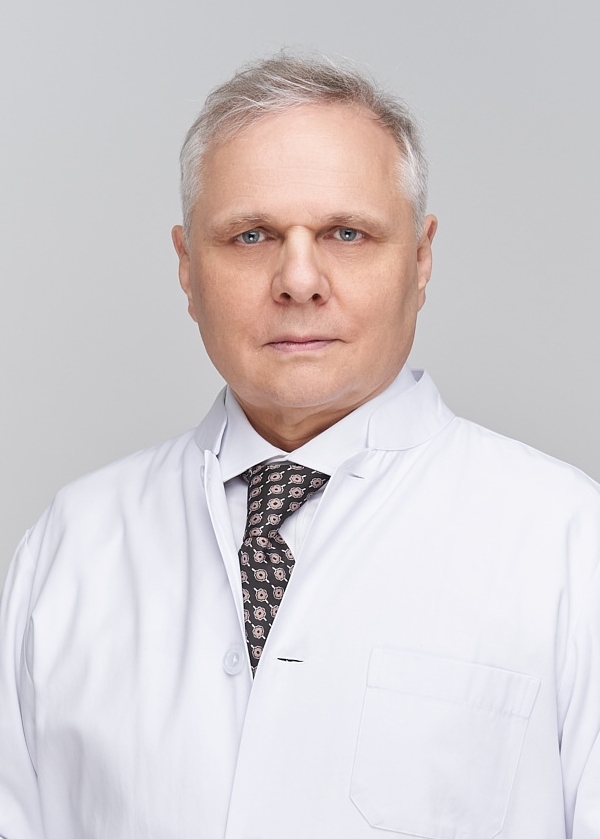
Drug dependency is a psychiatric disorder that affects a person’s behaviour and results in uncontrolled use of the addictive substance. Tobacco addiction is a significant concern as its legal use makes the “entry barrier” significantly lower, especially for young people.
The use of tobacco is a significant contributor to poor health including cancers such as lung and pancreatic cancer, chronic lung diseases as well as heart and brain infarctions.
This article describes various aspects of tobacco dependency with the main focus on how to quit smoking. Key treatment approaches for smoking cessation are counselling, medication, and hypnosis.
In hopes of encouraging a safe and healthy lifestyle, there will also be a few words on prevention as an inspiration to the young and old not to enter this deadly loop of smoking. Better than quitting smoking is to not start in the first place!
Getting Addicted to Tobacco
Most smokers use tobacco products regularly. This is because smokers are addicted to nicotine, crave it, and need its ongoing consumption to avoid withdrawal symptoms. Even only a few hours of smoking will trigger neurological adaptations and most smokers soon find a level of smoking that they maintain over time. A scientific study indicated that 80% of the smokers who were questioned reported that they want to stop smoking. Another 10% said they would like to cut down.
Nicotine, Tolerance, and Withdrawal
Unlike other drugs, tolerance of nicotine does not continue to build. This means that most smokers habitually come to smoke a certain number of cigarettes a day without escalating consumption to ever increasing amounts. A smoker will come to depend on smoking to feel psychologically normal and physically well and relaxed. If the smoker suddenly stops nicotine consumption withdrawal symptoms, that include negative physiological and psychological effects, will occur. This is the very reason why it is difficult to stop smoking.
Nicotine’s Stimulating Effect

Additionally, nicotine stimulates the central nervous system. The neurotransmitters play a role in this process. They affect heart rate, blood pressure, memory, learning, reflexes, aggression, sleep, sexual activity, and mental acuity. This stimulating effect can contribute to a smoker feeling more alert and mentally sharp. Smokers enjoy these feelings, which contributes to making it difficult for some to stop smoking. This is particularly true for individuals who report high levels of stress in their lives.
There are other chemicals implicated in the addiction to smoking. Scientists believe that some ingredient in tobacco causes a marked decrease in the levels of a particular enzymes (MAO). This enzyme is responsible for the breakdown of some neurotransmitters. Hence, when there is less MAO there will be higher output of the neurotransmitters which increases pleasurable feelings and the desire of repeated use (Is Nicotine, n.d.). Scientists have also found the chemical acetaldehyde in tobacco. In animal studies it was found that that this chemical reinforces the properties of nicotine and might contribute to tobacco addiction. This area of research also found that younger animals were more sensitive to the enhancing effects of acetaldehyde leading them to conclude that the brains of adolescents may be more susceptible to tobacco addiction (Is Nicotine, n.d.).
Nicotinic acetylcholine (nACH) receptors
For quite a while researcher have been studying nicotinic acetylcholine (nACH) receptors. Meanwhile scientists identified genes that serve as a blueprint of proteins that serve as subunits in nACH receptors. Variations in the DNA that encodes these genes may alter the structure or amount of the proteins produced, which in turn can modify what happens when nicotine molecules attach to the receptor. In 2007, researchers reported about genetically altered mice that had no interest in self-administering nicotine which was attributable to the removal of the protein that is held responsible for positive-reinforcement properties of nicotine. Undoubtedly, the role of genetics in nicotine addiction plays a significant role.
Tobbaco Addicition. Economics versus Healthcare
The Tobacco industry is one of the most lucrative branches of economy creating good financial rewards not only for the shareholders, but also for the governments due to tobacco taxes. Although the US government banned cigarette commercials in the US from television for over 30 years, tobacco products remain among the most heavily marketed.
According to the American Lung Association, the tobacco industry spent an estimated $12.49 billion on advertising in 2006. In 2009, the Food and Drug Administration (FDA) in the United States made importance changes to limit tobacco advertising. This same year, the FDA also began to regulate tobacco products and initiated health warnings on all tobacco packaging and advertising. A similar development can be observed in Europe and the Middle East.
There are millions of smokers who wish to quit smoking for a myriad of reasons. I will discuss the main concerns smokers have and the methods of treating smoking with hypnosis, counselling, and education. Stopping smoking will reward you with better health and appearance.
Economics Aspect of Smoking
Money might be noteworthy, but it is not the most critical reason to treat tobacco dependence. Effective October 01, 2017, a pack of cigarettes in Dubai, and the entire UAE, will cost a smoker 20 AED per pack. Even though this cost can be absorbed for most, it is worth a thought to realize that a pack-a-day smoker will be spending 7,300 AED per year.
*A little side note on the money: I have had many clients tell me that their smoking increased when they came to Dubai, because tobacco products here were much cheaper than in their homeland. In my home state of California for instance, a pack of cigarettes costs $10, which is about 37AED per pack.
Treatment for Smoking Cessation

Mark Twain
Of course, we know that the biggest concern is not the money, but our health. When I ask people why they want to quit smoking, I hear the following reasons:
- Health Worries
- Pressure from Doctors
- Faster Aging of Skin
- Loss of Freedom
- Bad Smell
- Pressure from Spouse
- Worried about being a bad role model for their children
- Tarnished Image…..and more
How to stop smoking is an important question once dependency has occurred. Our hope is to educate on the prevention of nicotine addiction as well. The simplest way to avoid development of any kind of dependency (among them smoking) is not to use the addictive substances.
Most smokers use tobacco products regularly. This is because smokers are addicted to nicotine, crave it, and need its ongoing consumption to avoid withdrawal symptoms. Even only a few hours of smoking will trigger neurological adaptations, and most smokers soon find a level of smoking that they maintain over time. A scientific study indicated that 80% of the smokers who were questioned reported that they want to stop smoking in Dubai. Another 10% said they would like to cut down, including some who have turned to vaping in Dubai as a perceived alternative.
Withdrawal Symptoms after Stopping Smoking
- An intense craving for nicotine
- Anxiety, tension, restlessness, frustration, or impatience
- Difficulty concentrating
- Drowsiness or trouble sleeping, as well as bad dreams and nightmares
- Headaches
- Increased appetite and weight gain
- Irritability or depression (Nicotine, n.d., para. 3)
Therapy Methods for Quitting Smoking
Tobacco addiction can be treated with several methods, often combining them. Nicotine substitution by patch, tablets or chewing gum (even the intravenous application of nicotine) has only little impact on cravings. Different studies have shown that the most satisfaction and reinforcement of the smoking habit occur when the peripheral, non-pharmacological factors are combined with the nicotine’s central effect. The majority of smokers who want to quit smoking attempt it on their own. However, rates of success for self-quitters are very low. Studies show that most smokers who stop smoking on their own relapse within the first week of their quitting attempt. Only about 3-5 % of individuals who quit on their own reach prolonged abstinence at 6-12 months post-quit.
Research clearly indicates that professional treatment and prolonged support for smoking cessation yields the highest success rates (Tobacco Addiction, n.d.). These treatment professionals include counsellors, psychotherapists, addictions specialists and psychiatrists. Psychologists and psychiatrists can discuss and offer methods to smokers that to increase success rates of quitting.
Tobbaco Addiction from Psychanalytical Standpoint
According to Freud the first stage of the psychosexual development of a child is the oral stage. It spans the first to second year of life. The erogenous zone during this phase is the mouth, lips, and tongue. This means that, during this developmental period, the mouth serves as the primary source of satisfaction. Children explore their environment by putting objects in their mouth. Beyond nursing at the mother’s breast for nourishment, the child also sucks on a bottle, pacifier, or their own thumb. These actions soothe the child, reduce stress, and help regulate emotions.
The developmental task in this phase is weaning from the aforementioned activities. According to Freud, the baby can only successfully move beyond the oral stage if this weaning process is completed effectively. Typically, this occurs gradually and step by step, with parents playing a crucial role in the process. A sudden and radical weaning can lead to significant stress and complications during this phase.
Complications during the oral stage can manifest later in life in the following ways:
- A strong tendency toward smoking or overeating, as these activities stimulate the unmet need for oral satisfaction.
- A general susceptibility to addictions.
- Low frustration tolerance.
Psychoanalytically smoking is an oral fixation in adults. While smoking the individual is temporary regressing finding pleasure puting a cigarette in his mouth to achieve an oral stimulation. Othe examples of oral fixation in adults is alcohol abuse and overeating.
Freud’s Tobacco Dependence
Freud, the inventor of the psychoanalysis, is the best example of such oral fixation. He became addicted to tobacco in his twenties. He daily often smoked more than 20 cigars. Despite doctors’ warnings about chain smoking, he was unable to quit smoking. Freud continued to smoke even after his doctor diagnosed him with oral cancer in 1923. Despite 33 surgeries over the next 16 years and a large prosthesis in his mouth to separate his sinus from his jaw, Freud never quit smoking.
Medication Helping Stopping Smoking
The idea behind pharmacotherapy is that medication is used in conjunction with therapy, such as CBT. Medications serve the purpose of reducing cravings and preventing the desired effects of smoking.
Two medications approved by the FDA (Food and Drug Administration) are:
1. A dopaminerg antidepressant with an anti-craving effect Bupropion which is marketed under the name of Zyban/Wellbutrin
2. An agonist of the nicotine receptors
As is the case with all medications, a careful assessment by an experienced physician is necessar
Nicotine Replacement Therapy
Nicotine replacement therapy is a good option for smoking cessation in addition to behavioral treatments to address withdrawal symptoms and cravings when smokers stop smoking. When nicotine consumption is abruptly stopped people can experience withdrawal symptoms within 2 – 3 hours of their last tobacco use. At the 2 – 3-day mark, these symptoms will peak. The severity of nicotine withdrawal symptoms hinges upon how long and how much a person smoked. FDA has approved a number of nicotine replacement therapies such as gum, inhalers, nasal spray, and skin patches.
Quitting Smoking with Counselling and Hypnosis
As a counsellor and clinical hypnotherapist, I have helped many people quit smoking in Dubai and the United States, treating smoking with a combination of CBT (cognitive behavioral therapy), education on dependency, and hypnotherapy.
We have to remember that smoking is an addiction and not just a bad habit, or a display of poor willpower. Treating smoking professionally will help you put this addiction into remission.
Quitting Smoking with Counselling
As a counsellor, I spend time with my clients discussing different aspects of addiction such as the underlying root cause, habit creation, mental patterns (CBT) to deal with the addition. Stopping smoking begins with uncovering the underlying root causes.
Quitting Smoking with Hypnosis
As a clinical hypnotherapist, Dr.Schonder uses hypnotherapy to help people their smoking addiction. Quitting smoking with hypnosis means that I tap into the unconscious mind to:
- deepen the resolve to quit smoking
- remove blocks to success
- increase motivation to quit smoking
- make the process easier than expected
Treating smoking with hypnosis and counselling will help you kick this habit (addiction) for a healthier life.
Sakina Rehabilitation Center

The Rehabilitation Center Sakina offers a comprehensive range of services, including individual and group sessions, psychoeducation on addiction and mental health, Cognitive Behavioral Therapy (CBT), relapse prevention strategies, family support, and holistic approaches such as mindfulness and physical fitness.
The aftercare planning and support systems ensure continuity of care. Additionally, Sakina provides customized programs to meet individual needs, including dual-diagnosis support for co-occurring mental health conditions such as addiction, depression, and anxiety.


